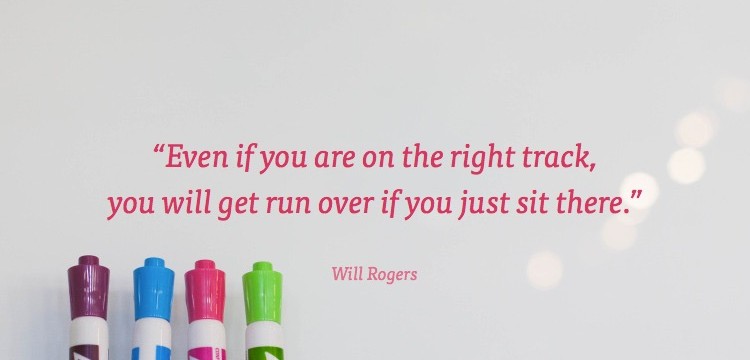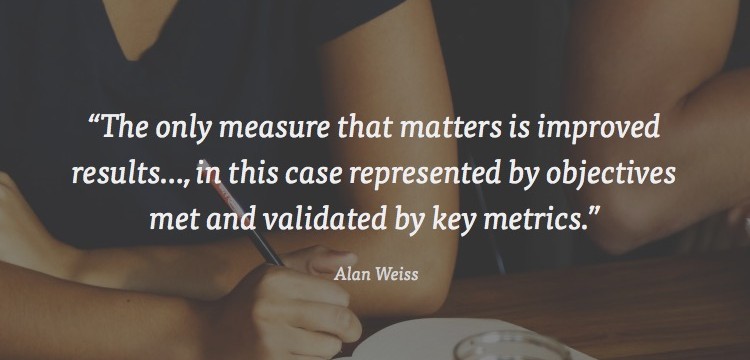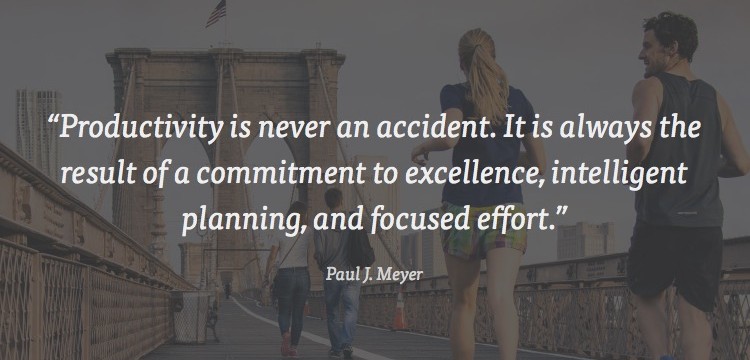The 5 realms of project management hell

Poor project management can turn a promising new project into the project from hell. From tight deadlines and crushing budgets, to last minute changes that make you want to give up and open a bakery. But project management is an area you must dominate if you want to run a successful creative studio or agency. We all know what it’s like when a client requests changes here, there and everywhere, but all of these little changes can add up to much bigger problems; project management hell!
My biggest ever “disaster” project was a one month website redesign that stretched on for a whopping six months! I thought it would never end. The client took weeks to get back to me on absolutely everything, there were changes left right and center and truth be told; it was all my fault. It was in my power to have done one of three things.
- Have seen the red flags, and run a mile before the project began
- Have reacted earlier, and fired the client
- Have managed the project like a pro and made sure everything was on track
I wouldn’t wish that project on anyone, so I want to look at how you can avoid such horrendous project management skills.

How to keep your next client project on track
Depending on your perspective, clients can be demanding. If you can’t surpass their expectations and objectives, get the project delivered on time and on budget, then you can kiss goodbye to any repeat work or referrals. So what’s to be done?
According to a study by PriceWaterhouseCoopers; of 10,640 projects, executed at 200 companies in 30 countries, only 2.5% of those companies successfully completed 100% of their projects. OK, so these weren’t all web or marketing agencies, but the statistics are an eye opener in themselves. Why would so many client projects fail?
While digging a little deeper into the mysteries of project management there’s the equally frightening tale from Spikes Cavell in the UK. According to their study, 57% of projects fail due to “a breakdown in communications”.
This is big!
57% of projects fail due to “a breakdown in communications”
Unfortunately, one of the areas that gets glossed over in project management is communication. We all know how important it is, but for some reason we’d rather be designing, coding, marketing or selling. A great end product in itself just isn’t enough. Clients buy results for sure, but, and at the risk of going all hippy on you, they also buy the experience of working with you. If a client feels they know where their money is going, that milestones are being hit and that they are part of the project, they will be a lot happier with you, your service and results.
So let’s take a look at a few common areas of concern that can take a promising project to the realms of project hell and back.

The 5 realms of project management hell:
Poor project scoping
A project with unclear goals and objectives is destined to fail at some point. There’s no way around it. A change of scope after a project begins can reduce feelings of trust between the client and service provider. Scope creep (as it’s more commonly known) will almost always lead to an increase in cost and, or the time required to make any changes. This makes is vitally important to have a clear and complete definition of the scope before beginning. Once the scope is agreed upon, proper documentation will make all the difference. Sometimes scope changes due to the very nature of the work, but as long as communication is open and clear from the start, there’s no reason for a project to become derailed.
Setting overly optimistic timelines
Raise your hand if you’ve never done this! It’s all too easy to be a “crowd pleaser” when it comes to creating deadlines. Often a client has a slanted view of just how long something can take to complete, but you and I should know better. We have the experience to know just what is involved in a given task…and if you don’t (yet), track everything you do. Learn how much effort goes into a given task.
Missing deadline after deadline leaves a very sour taste with the client, and once again, it’s very unlikely you will see any repeat work or referrals. If for some reason there is a delay on your behalf, communicate it as soon as possible. Apologise and move on. Of course, timelines work both ways. A client also has a responsibility to help keep the project on track. If you are delivering work that needs to be approved, or copy that needs to be written, corrected or otherwise then your client must also stick to the project schedule. Never be afraid to say how you work or how you expect your clients to work with you. And never be afraid to over-communicate.
A total disregard for proper communication
If you work with a dedicated project management team, there will always be at least two people from two different companies working together. Yours and theirs. The time your project management team get to spend with the client will be limited, so it must be spent well. The fact that you don’t share an office, or live next door makes clear and concise communication crucial to the success of the project. Regular contact in small doses gives your client confirmation that their money is hard at work and heading in the right direction. If a client has to get on the phone to see what’s happening, something isn’t right.
Not assigning the right project manager
“A good project manager doesn’t need to know anything about the subject to get it done.” Ever heard this one? It’s common enough and is based on the fact that good project management skills can go a long way. And that is definitely true. But a project manager that really understands what is happening within a project has a much better chance of completing a project successfully.
A complete lack of project documentation
Right from the initial discussion, you should start documenting. You should document your meetings, your plans, the work you do and everything that happens along the way. The absence of documentation, along with any changes that happen during the lifespan of the project can put everything in danger. Any undocumented piece of the plan, or unforeseen change makes a project far less likely to reach completion, on time and within budget. Inconsistencies in documentation can cause disagreements and confusion between team members and subsequently create problems with your client.
Projects can grow, and keeping them on track can be a huge challenge for a project manager. If your project manager don’t set expectations with the client and the team then bad things will happen.
Planning, documentation, and ongoing evaluation are the bread and butter of any project manager. But a project manager can enhance their workflow even further by paying special attention to the initial proposal:

It all starts with a solid project proposal
After your initial client interviews, the next step is to draft a compelling proposal. You know the client is onboard, you have all the relevant information and you feel you have a good grasp of the problems that underlie your client’s request.
You have enough to write a proposal that details just how you can help them reach, if not surpass their goals. But the proposal does two things, it lets your client see that you’ve actively listened and that you’ve understood. But it also sets the outline for how you will work to achieve the desired results. There should be no surprises, don’t forget, a proposal is a confirmation of everything you’ve learned from your client up to this point. It’s not a sales pitch.
A project proposal is not a document to vouch for your business, design or coding skills. If you’re making a pitch at this point in time then you’ve missed something earlier in the process. The proposal is your client’s guide to what to expect from you, and how will you be helping them. This of course, at a price…
…a proposal is a confirmation of everything you’ve learned from your client up to this point.
Your proposal is the ideal place to note your client’s goals, success criteria and major project deliverables. Without these, how will you know if the project has been a success or failure?
So what will you want to address with your proposal? Here are some areas you might want to look at:
- Be specific with deadlines - This means you should include time estimates for everything that will be worked on, at least to a reasonable extent. This is good for you because there’s no discussion afterwards on why something is taking so long. In addition, it will help your client understand the amount of work needed to complete a task or milestone.
- Use clear and easy to understand language - Step away from jargon. If you wander into “techno-babble” your client may not understand what you’re saying which can lead to ambiguity and uncertainty. Use language that has been used during your client interviews (recording interviews can help with this, but get permission!). The reiteration of your client’s own words, phrases and tone can help build rapport. It says you “I get it”.
- Project overview – Where is your client right now, what ails them? Why have they reached out? Assure them that you know what you’re here.
- Objectives - What will be the outcome of the project? How will you help your client succeed?
- Scope – Where does your work begin and where does it end. It’s as simple as that.
- Assumptions and risks – Anything you’re concerned about or you’re assuming. Use this to manage expectations when things outside your control go wrong.
- Approach – The plan itself. How will you complete the project?
- Initial effort, cost, and duration estimates - Depending on the type of project you’re working on, you may price one way or another, but I would recommend looking at tiered pricing. Tiered pricing allows you to present your solution based on the value given to your client, and not as a list of line items. If you want to see what Nathan Barry can teach us about pricing then check out this post.

Planning for the work ahead
After your proposal has been accepted, a detailed work plan can be a good next step.
Develop your work plan based on the proposal. The more time you spend planning the project will result in less time managing a project that is running out of control. Your work plan will provide step-by-step instructions regarding the execution of the project. And it will detail what work needs to be done, when and what resources are required.
Things to keep in mind when creating your work plan:
- When it makes sense, break large tasks into multiple smaller tasks. This helps you to estimate the time required with more accuracy. If in doubt, over estimate.
- Include details of all the resources that will be required at each stage. The devil’s in the details. Forget a requirement and it might throw off your entire project. This goes for clients as well. How should they get feedback to you, how soon and in what format?
- Expect things to go wrong! Add extra time in anticipation of mistakes or events that are out of your control.
Make sure your work plan makes it as easy as possible for you to stay true to your proposed solution with your client. When something goes wrong, you shouldn’t have to break any promises.
Your proposal is the ideal place to note your client’s goals, success criteria and major project deliverables.
Continually monitor your work plan, schedule and budget
Once the planning phase is over, the execution begins. Here, the trick is to keep an eye on the progress of the project and keep monitoring for any deviations or hiccups. Few projects ever proceed entirely as planned.
- Review the work plan on a regular basis in order to stay on schedule and on budget.
- Make sure everyone is up to date on the progress; both your team and the client’s.
- Monitor the budget closely and keep an eye on your timelines. If things aren’t going as expected, act sooner rather than later.
Communication is central to the success of any project. Never be afraid to over communicate, you can be sure that all clients will appreciate a daily or weekly email check-in or phone call. But let there be no mistake, you are in the driving seat. It’s up to you to set expectations, and up to you to manage and surpass those very same expectations. Before you relegate your next bad project to the realms of project hell, take a minute to look at how you can steer things in another direction. Very few projects need to be lost to a lack of organization. Then again, some projects really are just projects from hell!
